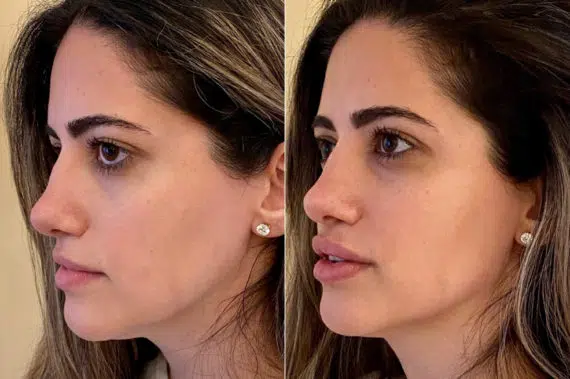A lip lift is a popular cosmetic procedure designed to enhance the appearance of the upper lip by shortening the distance between the nose and the lip line. It can provide a more youthful, balanced, and expressive smile. But like any surgical procedure, a lip lift carries potential side effects and risks.
If you’re considering this treatment, it’s important to make an informed decision. This guide will walk you through the most common lip lift side effects, less common risks, and how to reduce your chances of complications.
Common Lip Lift Side Effects (Typically Temporary)
Most patients experience some degree of the following symptoms immediately after surgery. These side effects are usually mild and resolve on their own during the healing process:
1. Swelling
- Nearly all patients experience swelling around the upper lip and base of the nose.
- Peaks within the first 48–72 hours and gradually subsides over 1–2 weeks.
2. Bruising
- Mild to moderate bruising may appear on the upper lip or cheeks.
- Typically fades within 7–10 days.
3. Redness or Discoloration
- The incision site may appear red or slightly discolored during early healing.
- Over time, the color blends with the natural skin tone.
4. Tightness or Numbness
- Temporary numbness or a tight feeling around the incision is normal.
- Nerve sensation usually returns within a few weeks to months.
5. Mild Discomfort
- Pain is generally minimal and well-controlled with over-the-counter or prescribed pain medication.
Less Common but Possible Lip Lift Risks
While complications are rare when performed by a skilled, board-certified facial plastic surgeon, the following lip lift side effects can occur:
1. Noticeable Scarring
- A fine scar under the nose is expected, but in some cases, it may be more visible or hypertrophic.
- Risk increases with improper wound care, sun exposure, or a personal history of poor scar healing.
2. Asymmetry
- Slight differences in lip height or shape may result if healing is uneven or tissue tension is misbalanced.
- Minor asymmetries can often be corrected with revision surgery if needed.
3. Prolonged Swelling or Numbness
- Some patients may experience lingering swelling or numbness that lasts longer than expected.
- This usually improves gradually over time but should be monitored by your surgeon.
4. Infection
- Rare but possible. Symptoms include increased redness, warmth, pus, or fever.
- Preventable with proper hygiene and antibiotics if prescribed.
5. Wound Separation or Delayed Healing
- The incision may partially reopen if under too much tension or due to poor aftercare.
- Smoking, uncontrolled diabetes, or excessive physical activity can contribute.
6. Overcorrection (Excessive Lifting)
- If too much skin is removed, the upper lip may appear unnaturally short or tight.
- This is typically avoidable with conservative surgical planning.
Rare Complications
Although uncommon, there are a few rare but serious risks to be aware of:
- Nerve damage: May result in long-lasting numbness or altered sensation.
- Lip distortion: If underlying muscles are affected, it can impact lip movement or expression.
- Allergic reaction to anesthesia or medications: Always disclose allergies and medication history prior to surgery.
How to Reduce the Risk of Side Effects
To ensure the safest experience and best results, follow these recommendations:
- Choose a board-certified facial plastic or cosmetic surgeon with proven lip lift experience.
- Follow all pre- and post-operative instructions exactly.
- Avoid smoking, alcohol, and strenuous activity during the recovery period.
- Use scar treatments (like silicone gel) and protect the area from sun exposure.
- Attend all follow-up appointments to monitor healing and address concerns early.
When to Call Your Surgeon
Contact your provider immediately if you experience:
- Increasing pain not relieved by medication
- Significant swelling after the first week
- Yellow or green discharge from the incision
- Fever or chills
- Sudden lip asymmetry or movement issues
Prompt intervention can help resolve most issues before they become more serious.
Final Thoughts
A lip lift is a safe and effective procedure when performed by a qualified surgeon—but it’s essential to understand the potential lip lift side effects and how to manage them. The majority of patients heal well with minimal scarring and enjoy long-lasting, natural-looking results.




